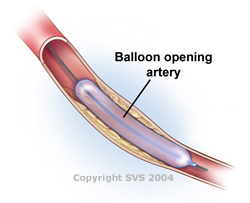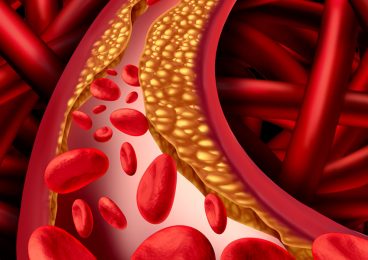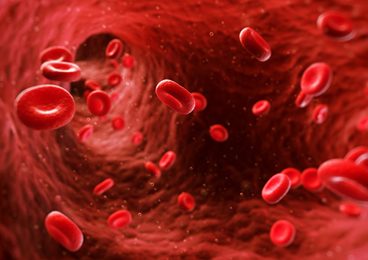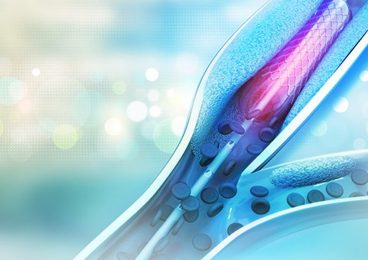
Bloqueo de arterias
Síntomas
Obstrucción de Arterias o Aterosclerosis
Arteries and veins deliver life-saving blood to your body in a similar way as the plumbing system delivers water to different areas of your home. Arteries carry blood from the heart to the rest of the body, while veins return the blood back to the heart. Both arterias y venas asegurarse de que el oxígeno y los nutrientes vitales estén circulando por todo el cuerpo.
However, what happens when there is buildup in our arteries, or the pipes of your home? At first, you may not notice a difference but over time, you start to notice problems.
Plaque buildup in an artery, also called atherosclerosis, causes poor circulation, especially in your lower extremities. This buildup of fats, cholesterol, and other substances in and on the artery walls does not happen overnight. It is a gradual process. As we age, the arteries can harden and narrow due to the plaque buildup. This buildup restricts the normal flow of blood throughout the body, in particular the legs. If left untreated, a blocked artery can cause severe medical complications such as pain, blood clots, stroke and even amputation.
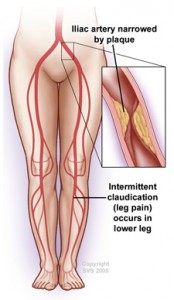
¿Quién está en riesgo?
Consulte a un médico especialista vascular si tiene alguno de estos factores de riesgo para la aterosclerosis.
- Edad ? 55+
- Género: los hombres son más propensos a la afección que las mujeres.
- Alta presión sanguínea
- Diabetes
- De fumar
- Colesterol alto
- Obesidad
- Falta de ejercicio
- Antecedentes familiares de problemas vasculares.
Una dieta saludable y el ejercicio pueden ayudar a prevenir y controlar los bloqueos en las arterias. Las opciones de tratamiento pueden incluir medicamentos, procedimientos endovasculares mínimamente invasivos para abrir arterias bloqueadas o cirugía de derivación.
Síntomas
Atherosclerosis often has no symptoms until the buildup is severe enough to block blood flow. Here are some of the symptoms you may experience if you have a blockage in your arteries.
- Calambres dolorosos de los músculos de la cadera, el muslo o la pantorrilla después de la actividad (claudicación).
- Entumecimiento o debilidad en las piernas.
- Frialdad en la parte inferior de la pierna o el pie, en comparación con otras partes del cuerpo.
- Una herida o úlcera adolorida que no cicatriza bien en el dedo del pie, el pie o la pierna.
- Cambio en el color de la piel o piel brillante en las piernas.
- Caída del cabello o crecimiento más lento del cabello en los pies y las piernas.
- Crecimiento más lento de las uñas de los pies.
- Sin pulso o pulso débil en las piernas o los pies.
¿Qué pruebas se necesitan?
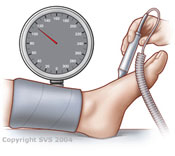
Índice tobillo-brazo (ABI)
Es posible que le hagan una prueba del índice tobillo-brazo (ABI, por sus siglas en inglés) para comparar la presión arterial en su tobillo y su brazo, que normalmente son iguales. Si la presión arterial en su tobillo es significativamente más baja, eso podría ser un signo de estrechamiento de las arterias de las piernas.
Ultrasonido Doppler
La ecografía se puede usar para determinar qué arterias están bloqueadas. A menudo, la angiografía se usa para encontrar la ubicación específica y el patrón de cualquier bloqueo. La angiografía ayuda a identificar específicamente la mejor manera de corregir la enfermedad aortoilíaca. Tanto la MRA como la CTA también son útiles para delinear la extensión de la enfermedad aortoilíaca.
Las pruebas se pueden hacer en el Laboratorio vascular PVA.
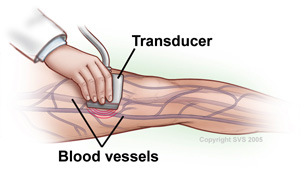
Tratos
Según la gravedad de su afección, un cirujano vascular will determine the best treatment option for you. This may include lifestyle changes, medications, minimally invasive cath lab procedures such as angioplastia o colocación de stent, que se puede hacer en una oficina de PVA, o cirugía de derivación abierta.
At PVA, we are blood circulation experts. Each and every day, we focus our knowledge and expertise on improving circulation in feet and throughout the body to help our patients avoid serious complications such as stroke or amputation. Vascular surgeons are the only doctors treating blood circulation problems today who can perform all treatment options available including medical management, minimally invasive procedures, and open surgical repair including bypass.
Solo cuando ve a un experto vascular que ofrece todas las opciones de tratamiento, puede estar seguro de recibir la atención más adecuada para mejorar la circulación y evitar que se desarrollen más complicaciones médicas.
